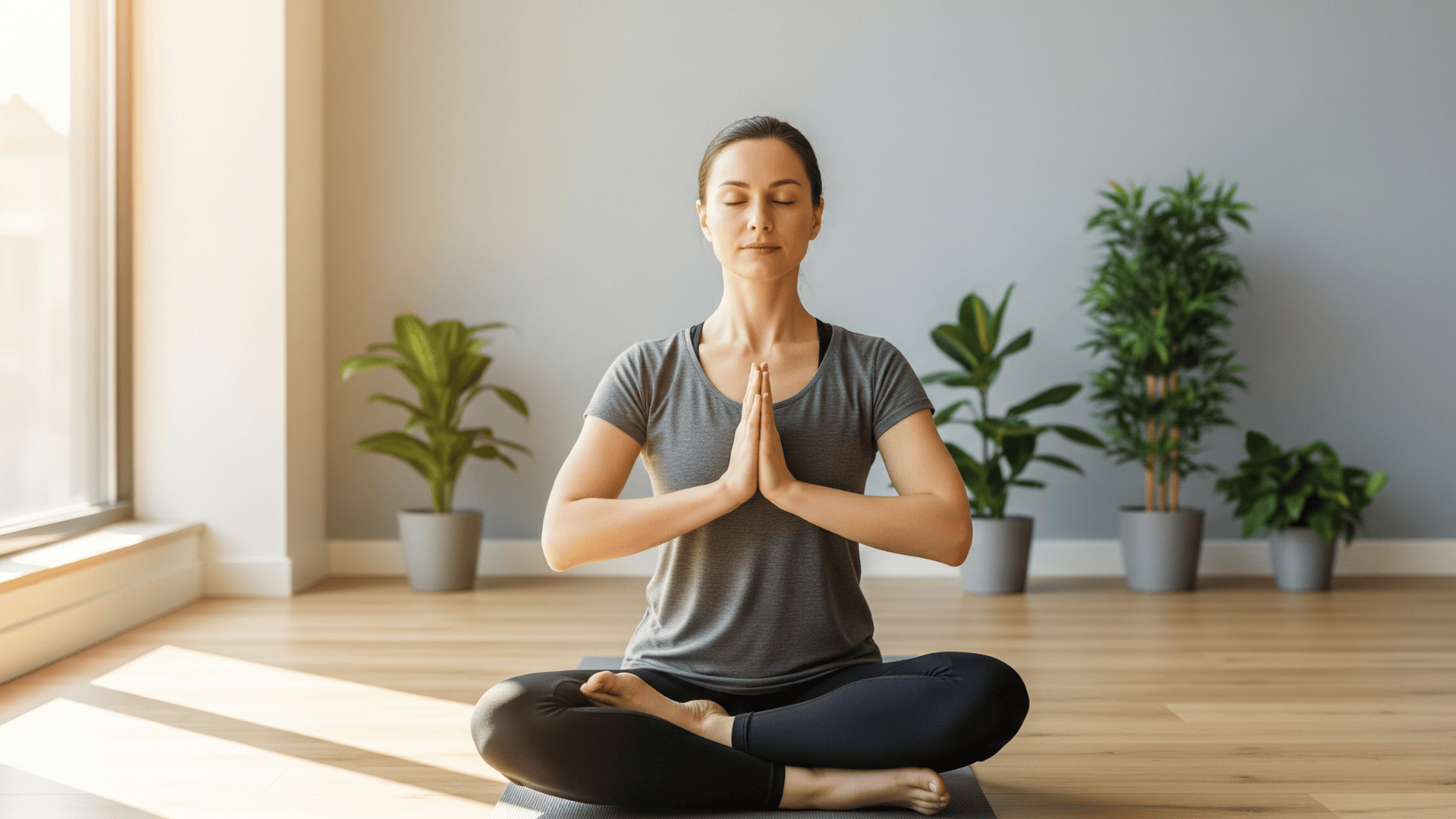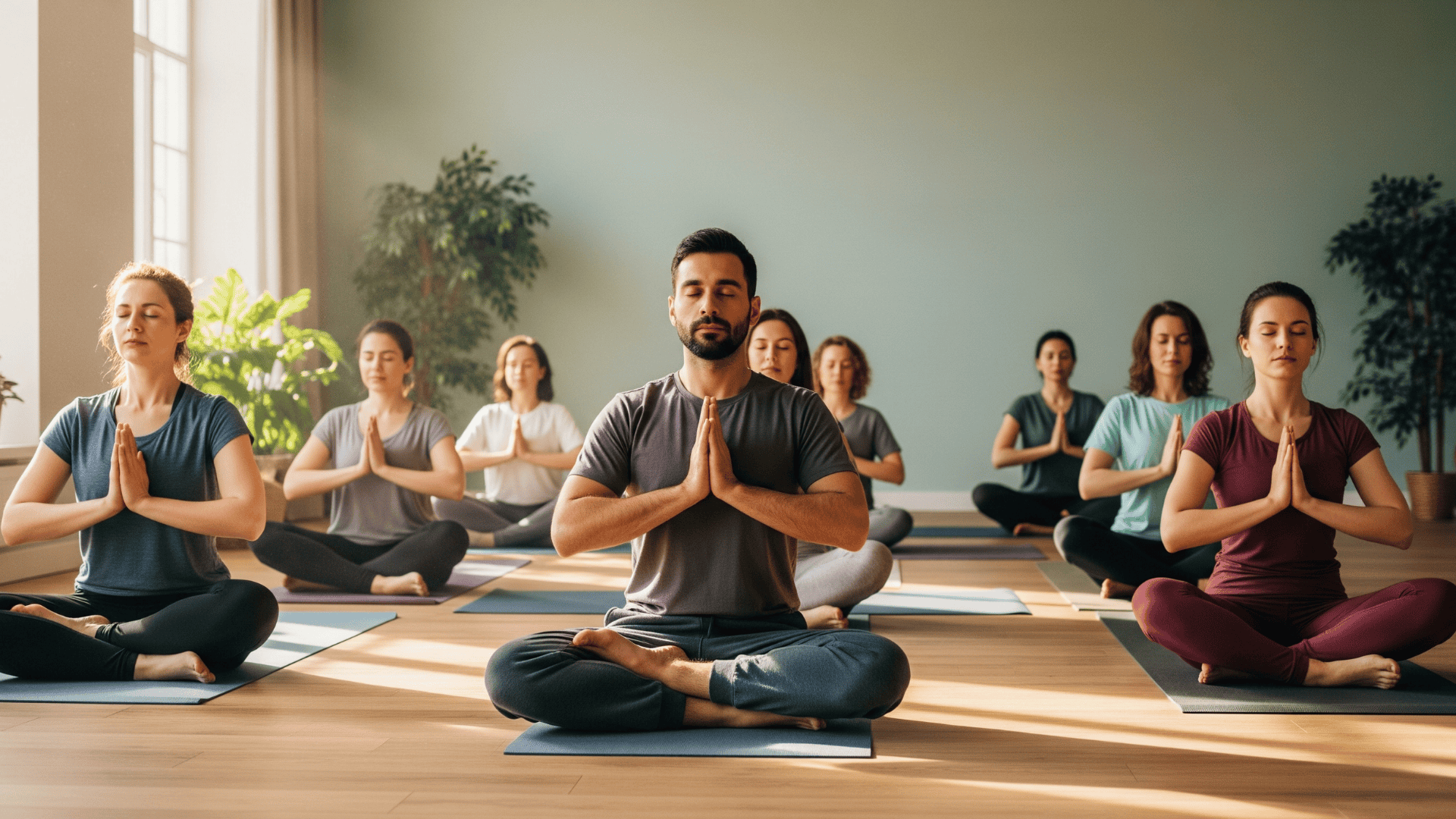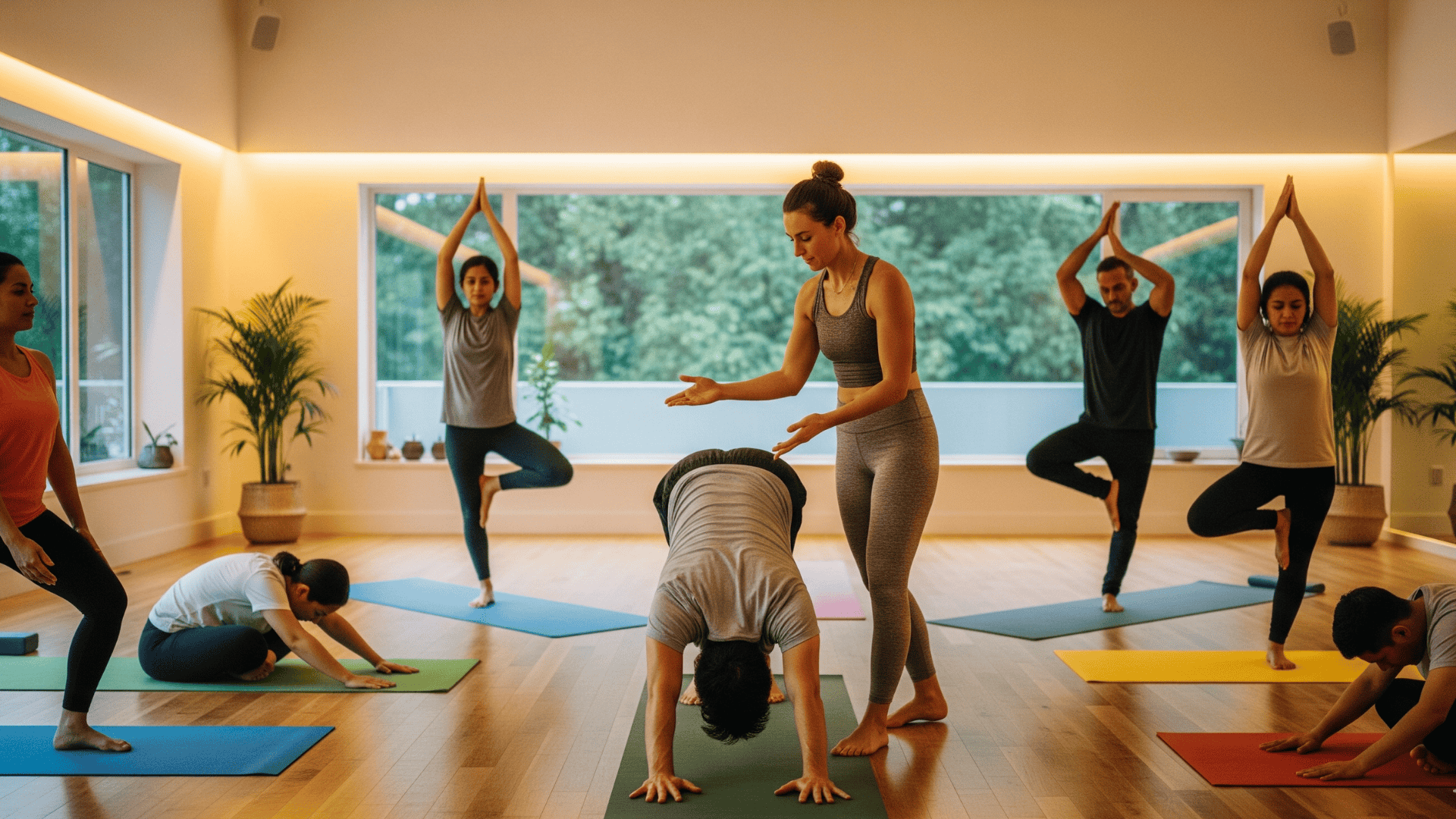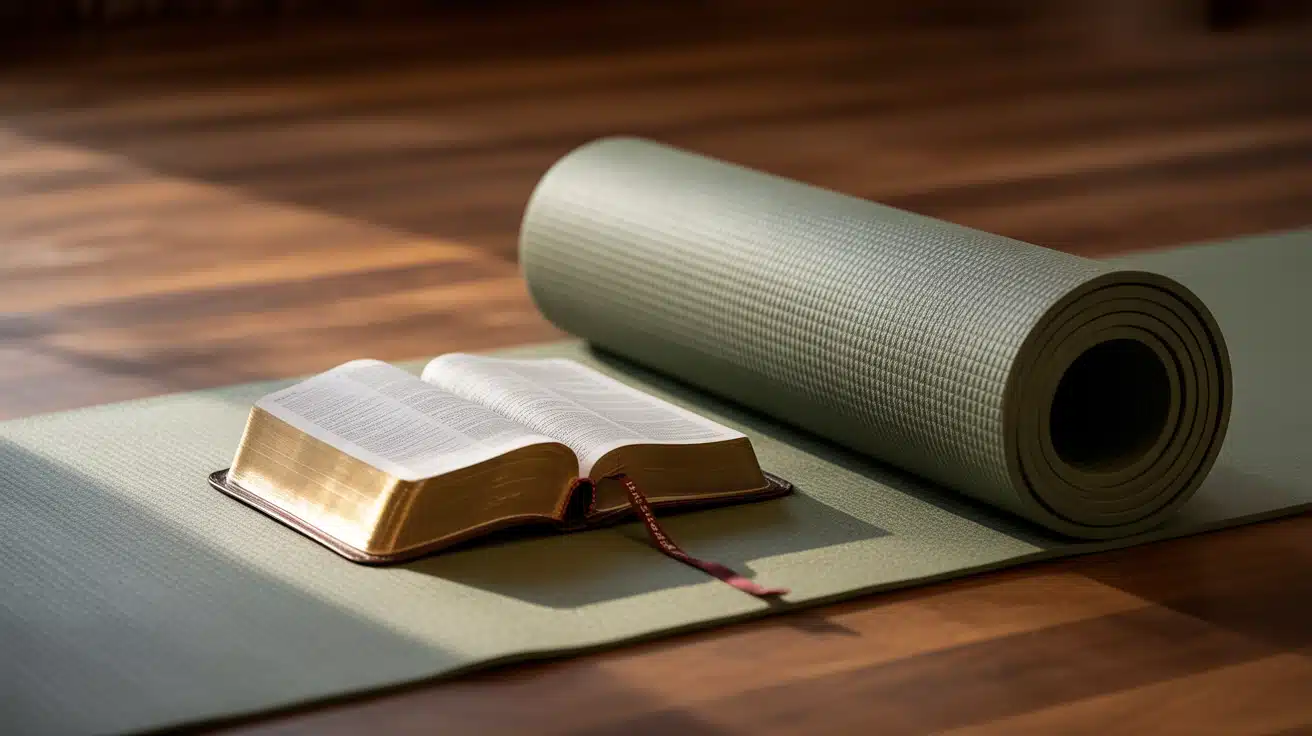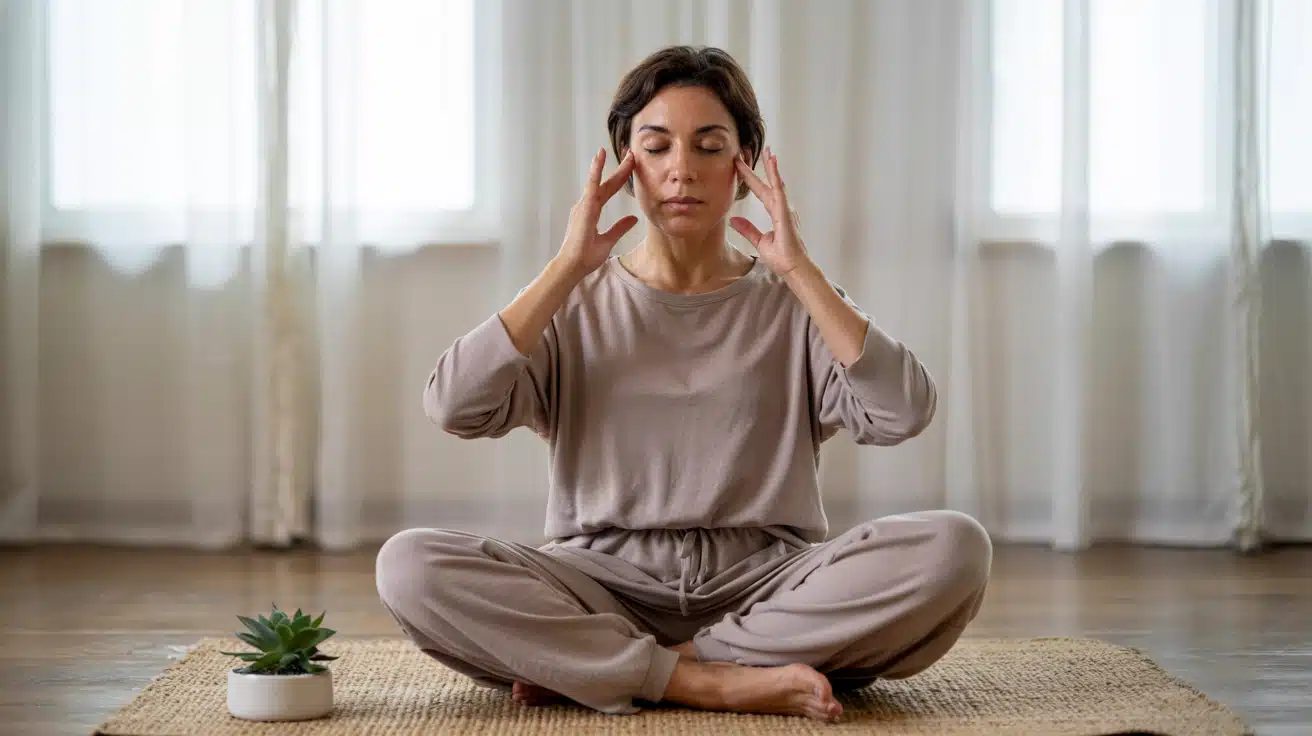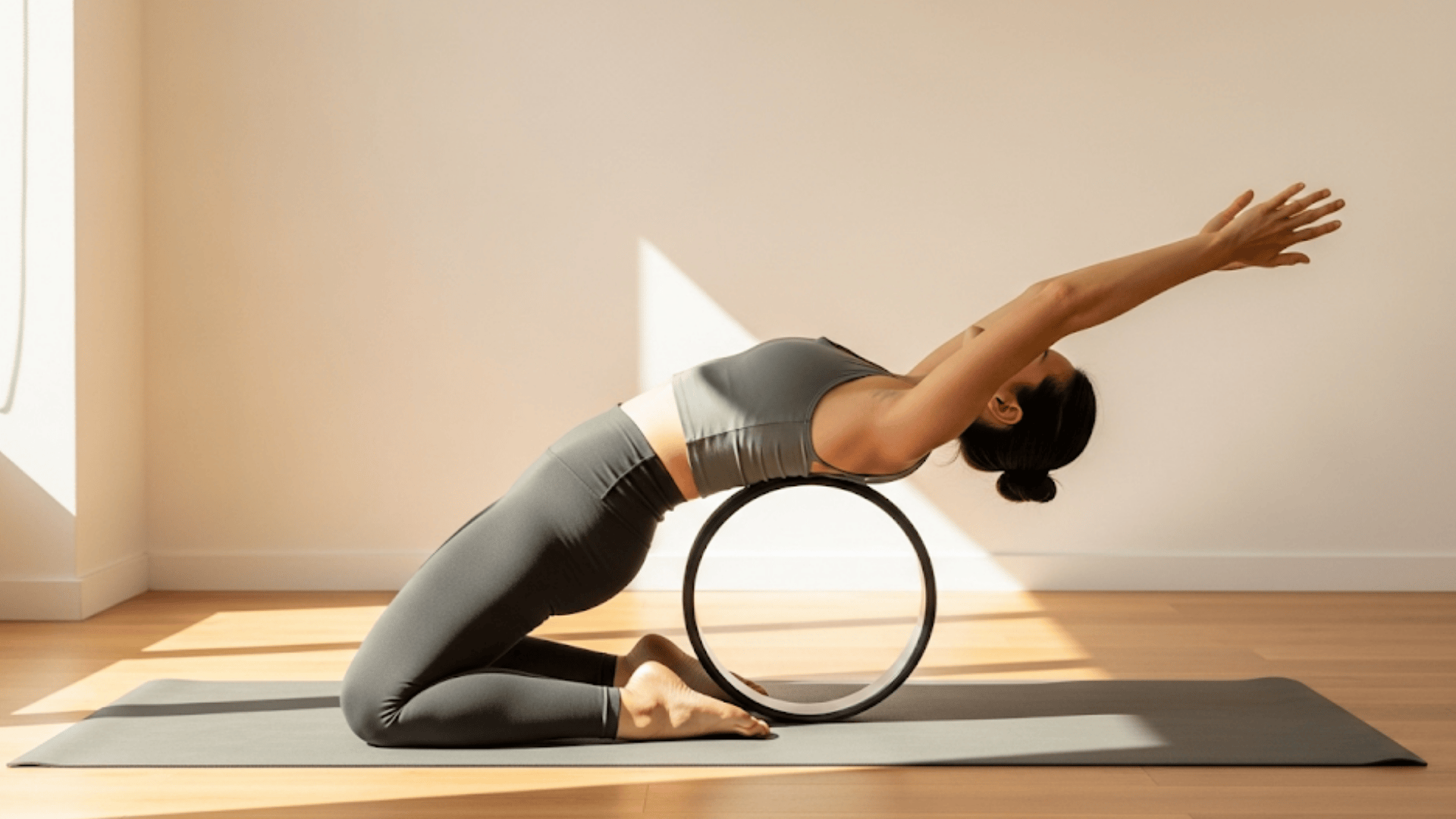Do your yoga classes feel flat? Students go through the motions but miss the deeper magic?
Most yoga teachers focus only on poses and breathing. But there’s a missing piece that can alter your entire class experience.
What if you could help students connect with their true purpose? What if each class became a meaningful experience that stays with them long after they roll up their mats?
Yoga intentions make this possible. These simple, heartfelt focuses guide students from just stretching to real transformation.
Learn how to weave powerful intentions into every class you teach. These ready-to-use yoga intentions will help your students find purpose, peace, and connection on their mats.
What Are Yoga Intentions?
A yoga intention, or sankalpa, is like a promise you make to yourself from the heart.
It’s not about nailing a handstand or losing weight. Instead, it’s a simple, soulful focus, such as being kind or staying present, that guides your practice.
Think of it as a quiet whisper from your truest self, rooted in ancient yoga wisdom. In practices like Yoga Nidra, a sankalpa can even shift habits and bring a sense of unity to your life. It’s powerful stuff!
Why bother with intentions? They give your class purpose. They help students stay in the moment, connect with their values, and carry that good energy into their day.
Without an intention, yoga can feel like just stretching. With one, it’s a journey.
How to Set an Intention
Here’s the deal: setting an intention is easy. Start by asking your students to pause and breathe.
Have them think about what they need today, maybe peace, strength, or gratitude.
Encourage them to pick a short, present-tense phrase, like “I am calm” instead of “I’ll try to be calm.”
Keep it real and personal. Maybe have them jot it down or repeat it silently during class. It’s like planting a seed that grows with every pose.
25 Yoga Intentions to Inspire Your Classes
Here’s a list of 25 intentions to bring fresh energy to your classes. Each one comes with an explanation, a sample phrase, and tips to weave it into your teaching. Mix and match to suit your students’ vibes!
1. Gratitude Abounds
Why: Helps students appreciate the moment and their bodies.
Phrase: “I am grateful for this breath.”
How: Start with a quick gratitude meditation. Ask students to name one thing they’re thankful for. Pair with heart-opening poses like Camel or Bridge.
2. Inner Strength
Why: Builds confidence and resilience, inside and out.
Phrase: “I am strong in body and spirit.”
How: Use Warrior I and II to channel power. Cue students to feel their strength with each exhale.
3. Release and Surrender
Why: Lets go of stress and expectations.
Phrase: “I let go of what holds me back.”
How: Guide students through forward folds like Child’s Pose. End with a long Savasana, encouraging them to release tension.
4. Harmony Within
Why: Brings balance to a busy mind and body.
Phrase: “I am balanced and whole.”
How: Incorporate Tree Pose or Half Moon to focus on stability. Remind students to sync breath with movement.
5. Compassion Ripple
Why: Fosters kindness for self and others.
Phrase: “I share love with the world.”
How: Try partner poses or a group affirmation circle. End with a loving-kindness meditation, sending good vibes to all.
6. Mindful Presence
Why: Keeps students in the now.
Phrase: “I am here, fully present.”
How: Cue breath awareness in every pose. Try a slow Sun Salutation to emphasize mindfulness.
7. Inner Light
Why: Reminds students of their inner wisdom.
Phrase: “I shine my light brightly.”
How: Use poses like Upward Dog to open the chest. Encourage students to visualize a glowing light within.
8. Self-Acceptance
Why: Embraces all parts of oneself, flaws and all.
Phrase: “I love who I am.”
How: Pair with gentle twists to release judgment. Invite students to smile softly during practice.
9. Grounded Stability
Why: Roots students like a sturdy tree.
Phrase: “I am steady and grounded.”
How: Focus on standing poses like Mountain or Warrior III. Cue pressing feet into the earth.
10. Flowing Grace
Why: Encourages fluid, adaptable movement.
Phrase: “I move with ease and grace.”
How: Flow through Vinyasa sequences like water. Emphasize smooth transitions.
11. Heart Opening
Why: Expands love and vulnerability.
Phrase: “My heart is open to give and receive.”
How: Use backbends like Cobra or Wheel. Guide students to breathe into their chest.
12. Inner Silence
Why: Quiets mental chatter for clarity.
Phrase: “I find peace in silence.”
How: Start with a silent meditation. Use restorative poses like Supported Bridge.
13. Fearlessness
Why: Empowers students to face challenges.
Phrase: “I am bold and fearless.”
How: Try inversions like Headstand prep. Encourage students to trust themselves.
14. Radiant Energy
Why: Taps into vibrant inner power.
Phrase: “I am full of radiant energy.”
How: Use energizing flows like Sun Salutations. Cue students to feel their vitality.
15. Sacred Space
Why: Treats the mat as a healing sanctuary.
Phrase: “This space is sacred.”
How: Begin with a ritual, like lighting a candle (if allowed). Use grounding poses like Seated Forward Fold.
16. Unity of Breath and Movement
Why: Creates a seamless flow.
Phrase: “My breath and body move as one.”
How: Teach a Vinyasa flow, syncing each move with an inhale or exhale.
17. Joyful Expression
Why: Sparks lightness and playfulness.
Phrase: “I embrace joy in every moment.”
How: Add playful poses like Happy Baby. Encourage smiles and laughter.
18. Inner Peace
Why: Cultivates calm amidst chaos.
Phrase: “I am at peace within.”
How: Use restorative poses like Legs-Up-the-Wall. Guide a calming breath meditation.
19. Connection to Nature
Why: Aligns students with the earth’s energy.
Phrase: “I am one with nature.”
How: Practice outdoors if possible or visualize nature. Use poses like Tree or Mountain.
20. Authenticity
Why: Encourages being true to oneself.
Phrase: “I am my authentic self.”
How: Invite students to move intuitively in a free-flow sequence.
21. Resilience
Why: Builds mental and physical toughness.
Phrase: “I am resilient and unbreakable.”
How: Hold challenging poses like Plank for longer. Cue strength with each breath.
22. Openness to Change
Why: Embraces life’s transitions.
Phrase: “I welcome change with ease.”
How: Use dynamic poses like Crescent Lunge. Encourage flexibility in mind and body.
23. Community Connection
Why: Honors the group’s shared energy.
Phrase: “I am connected to this community.”
How: Incorporate partner stretches or a group chant like “Om.”
24. Clarity of Mind
Why: Clears mental fog for focus.
Phrase: “My mind is clear and focused.”
How: Use balancing poses like Eagle. Guide a brief mindfulness exercise.
25. Gratitude for the Body
Why: Honors the body’s strength and wisdom.
Phrase: “I honor my body’s wisdom.”
How: End with a body scan in Savasana, thanking each part for its work.
Bringing Intentions to Life in Your Classes
So, how do you make these intentions stick?
It’s all about setting the vibe and weaving the theme into every moment. Here’s how:
Kick Things Off Right: Start with a short meditation or a question like, “What do you need today?” Let students sit quietly and find their intention. Maybe play soft music to set the mood.
Thread It Through: Mention the intention during poses. For example, in a heart-opener, say, “Breathe into your heart and feel compassion grow.” Tie it to the breath or a specific movement.
Mix It Up for Class Types:
- Vinyasa: Link the intention to the flow, like “Move with grace” during transitions.
- Restorative: Focus on reflection, like “Surrender” in long holds.
- Beginner: Keep it simple, like “I am present,” to avoid overwhelm.
Wrap It Up: End with a moment to revisit the intention. Maybe ask, “How did this intention feel today?” or let students journal silently.
Tips to Keep It Real and Engaging
Want to make your intentions hit home? Here’s some down-to-earth advice:
-
Know Your Crew: If your students are stressed office workers, try intentions like “Release and Surrender.” For athletes, go for “Inner Strength.” Match the vibe to their needs.
-
Seasonal Vibes: Tie intentions to the time of year. “Renewal” in spring or “Gratitude” around Thanksgiving feels natural.
-
Tell a Story: Share a quick personal story or a yogic tale to make the intention relatable. Like, “I once felt scattered, but focusing on ‘presence’ changed my practice.”
-
Keep It Inclusive: Make sure everyone feels welcome. Use universal themes like love or peace that anyone can connect with, no matter their background.
Conclusion
Your yoga classes now have the tools to create real change. These intentions give your students more than physical poses. They offer emotional healing and mental clarity.
Remember to match intentions with your students’ needs. Stressed professionals benefit from “Release and Surrender.” Athletes connect with “Inner Strength.” Season your classes with themes that feel natural and true.
Start small. Pick one intention that speaks to you. Watch how it shifts the energy in your room. Your students will notice the difference.
Ready to change your teaching? Choose an intention from this list for your next class. See how it changes not just your students’ practice, but your own connection to yoga too.
What intention will you try first? Share your experience with fellow teachers and keep growing together.

